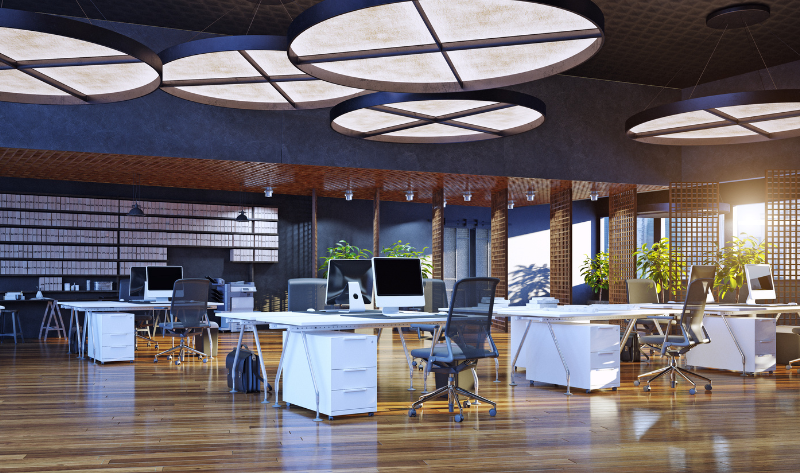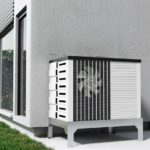Corporate office interior design is more than just aesthetics; it’s about creating a space that boosts productivity, fosters collaboration, and promotes employee well-being. However, several misconceptions often lead to ineffective design choices. Let’s debunk these myths and understand the fundamentals of effective corporate interior design, particularly in the context of Singapore.
Misunderstanding the Importance of Space Planning
One of the most common mistakes in corporate office interior design is underestimating the importance of space planning. Many believe that as long as the office looks good, it will function well. This couldn’t be further from the truth.
Effective space planning involves strategically arranging furniture, equipment, and workstations to optimise the flow of movement and communication. In Singapore, where office space can be limited, it is crucial to make the most of every square metre. Poor space planning can lead to overcrowded areas, hampering productivity and causing discomfort among employees. Investing in professional space planning ensures that the layout promotes efficiency and comfort.
Overlooking Ergonomics
Ergonomics is often an afterthought in corporate interior design. Many companies focus on the visual appeal of the office, neglecting the comfort and health of their employees. However, uncomfortable chairs and poorly positioned desks can lead to long-term health issues like back pain and repetitive strain injuries.
Incorporating ergonomic furniture and design principles into the office layout is essential. This means selecting adjustable chairs, and sit-stand desks, and ensuring that computer monitors are at eye level. By prioritising ergonomics, businesses can enhance employee well-being and productivity. In Singapore, where the workforce is highly competitive, maintaining a healthy work environment is vital.
ALSO READ: 8 Fundamental Corporate Furniture Trends To Stay In 2023
Neglecting Natural Light
Another common oversight in corporate office interior design is the neglect of natural light. Artificial lighting is often relied upon too heavily, creating a dull and uninspiring work environment. Natural light not only enhances the aesthetic appeal of an office but also has significant health benefits, including improved mood and energy levels.
Maximising natural light should be a priority in any corporate interior design project. This can be achieved by positioning workstations near windows, using glass partitions, and selecting light-coloured materials that reflect sunlight. In Singapore, where sunlight is abundant, leveraging natural light can transform an office space into a vibrant and inviting workplace.
Ignoring Acoustics
Sound control is a critical aspect of corporate office interior design that is frequently overlooked. Open-plan offices, which are popular in Singapore, can be noisy and distracting, negatively impacting productivity. Poor acoustics can lead to increased stress levels and decreased concentration among employees.
To address this, it is important to incorporate sound-absorbing materials and design features. Acoustic panels, carpets, and ceiling tiles can help reduce noise levels. Additionally, creating designated quiet zones and meeting areas can provide employees with spaces to focus and collaborate without disturbances. Effective acoustic design ensures a more pleasant and productive work environment.
Failing to Reflect Company Culture
Corporate office interior design should reflect the company’s culture and values. However, many businesses fail to incorporate their brand identity into the office design, resulting in a generic and uninspiring space. An office that reflects the company’s ethos can boost employee morale and create a sense of belonging.
Incorporating company colours, logos, and unique design elements can help create a cohesive and motivating environment. In Singapore, where businesses strive to differentiate themselves in a competitive market, a well-designed office embodying the company culture can make a significant impact.
Overcomplicating Design
Many overlook simplicity in corporate interior design. Many companies try to incorporate too many design elements, leading to a cluttered and chaotic space. Overcomplicated designs can overwhelm employees, reducing productivity and increasing stress levels.
A minimalist approach can be more effective, focusing on functionality and clarity. Simple, clean lines and a neutral colour palette can create a calming and efficient workspace. A straightforward design can enhance focus and performance, especially in a fast-paced business environment.
Conclusion
Effective corporate office interior design is about more than just aesthetics. It involves thoughtful space planning, prioritising ergonomics, maximising natural light, addressing acoustics, reflecting company culture, and embracing simplicity. By avoiding these common mistakes, businesses can create a workspace that promotes productivity, well-being, and employee satisfaction.
For expert advice and solutions in corporate interior design in Singapore, contact OSCA Asia today. Enhance your workspace and boost your business performance with professional design services.



